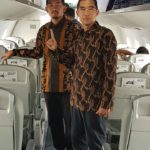Profile Sentani International Airport for Cargo Business Opportunity

Sentani International Airport (Indonesian: Bandar Udara Internasional Sentani) (IATA: DJJ, ICAO: WAJJ) is an airport serving Jayapura, the capital of Papua province, Indonesia, on the island of New Guinea. It is located in the town of Sentani District, approximately 40 km from downtown Jayapura; the name ‘Sentani’ is taken from a lakenearby. It is the easternmost airport in Indonesia, the largest airport in Papua and the main hub to the rural areas of Papua, and was formerly a Special Airport Class 1.
Facilities
The airport resides at an elevation of 289 feet (88 m) above mean sea level. It has one runway designated 12/30 with an asphalt surface measuring 3,000 by 45 metres (9,843 ft × 148 ft). Sentani airport has three airbridges.
Cargo
Airlines operate in Sentani are Cardig Air to Wamena, Tri-MG Intra Asia Airlines to Wamena. The airport serves as the main port of entry into the island of Indonesian New Guinea. The air traffic is roughly divided between flights connecting to destinations within the Papua province and flights linking Papua to other parts of Indonesia.
Sentani Airport is also the main base for several aviation organizations, including Associated Mission Aviation, Mission Aviation Fellowship, YAJASI and Tariku Aviation.
Airport facility improvements
In October 2012, The Ministry of Transportation announced plans to extend the length of the airport’s runway to 3,000 meters, add a parallel taxiway, and to expand the passenger terminal to accommodate jet bridges to board and disembark passengers.[5] As of the end of 2015, the airport incorporates all the aforementioned improvements.
Culture hygiene
Unlike typical airport terminals around the world, Sentani Airport features signs that read “Dilarang makan pinang” (translated, “Consumption of betel nuts is prohibited”) posted on walls throughout the terminal. A sight that often attracts the attention of foreign travelers, these were posted in the late 2000s as the airport management’s response to the local population’s tendencies to chew areca nuts then dispose of red residue (caused by chewing) by spitting on public ground, leaving an ungainly stain on the ground.[6]












